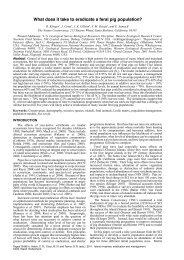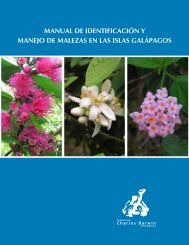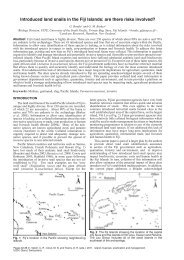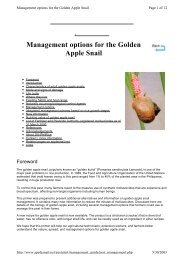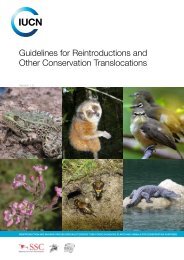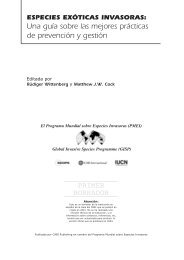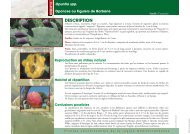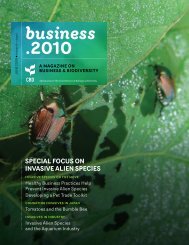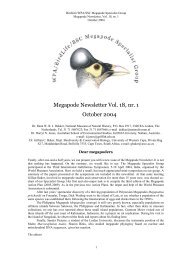Aliens Newsletter - ISSG
Aliens Newsletter - ISSG
Aliens Newsletter - ISSG
Create successful ePaper yourself
Turn your PDF publications into a flip-book with our unique Google optimized e-Paper software.
Figure 2. Geographic location map of Guafo Island, Chiloé, Chile. The black areas represent the total surface above<br />
the 150 meters above sea level, which correspond to the sooty shearwater nesting areas. The white ellipse highlights<br />
the surveyed zone<br />
The sooty shearwater Puffinus griseus (Gmelin,<br />
1789; Procellaridae) is a medium-size seabird that<br />
nests in burrows located on islands around South-<br />
America, Australia and New Zealand (Fig. 1). It<br />
breeds in colonies between October and May then<br />
migrates to the northern hemisphere during the austral<br />
winter (Briggs & Chu 1986, Cooper et al. 1991,<br />
Spear & Ainley 1999). In New Zealand this species<br />
breeds on small and large colonies in a large number<br />
of islands (Hamilton et al. 1997), reaching 2.75<br />
millions of individuals on Snares Island (Warham<br />
& Wilson 1982). There are a total of 20 million pairs<br />
estimated in this region (Robertson & Bell 1984).<br />
There are also small colonies in southern Australia<br />
with approximately 2,000 birds in the largest (e.g.<br />
Spear & Ainley 1999).<br />
In relation to the conservation status of P. griseus,<br />
the IUCN (2009) classifies this species as “near<br />
threatened”. There is a large body of published information<br />
about the breeding colonies from the<br />
western Pacific Ocean, establishing that the population<br />
is still decreasing both in their nesting areas<br />
as well as in their migratory sites (Hamilton 1997,<br />
Veit et al. 1996, Scofield & Christie 2002, Uhlmann<br />
2005). A traditional harvest of sooty shearwater<br />
chicks by Maoris occurs just before fledging on the<br />
islands adjacent to New Zealand. However it is still<br />
unknown if this activity is sustainable in the longterm<br />
(Gaze 2000, Clucas et al. 2008) due to factors<br />
such as climatic fluctuations, by-catch (Uhlmann<br />
2005), social and technological change (Lyver &<br />
Moller 1999), predation by introduced mammals<br />
like dogs (King 2005), stoats (Lyver et al. 2000),<br />
cats (Brothers 1984) and rats (Gaze 2000, Jones<br />
2000, Harper 2007), all of which may have an impact<br />
on population dynamics. For instance, due to<br />
the decreasing birth rate that has been observed for<br />
many decades on Titi island, New Zealand, the hunting<br />
of these seabirds was banned and successful rat<br />
eradication campaigns were performed due to their<br />
predatory impact on the breeding colonies (R.<br />
norvegicus (Berkenhout 1769) during the 1960s and<br />
70s) (Gaze 2000).<br />
Figure 3. Chick of sooty shearwater in the burrow nest<br />
chamber<br />
<strong>Aliens</strong> 35



